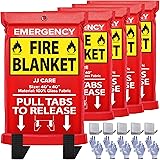Table of Contents
- Choosing the Right Location
- Gathering Natural Materials
- Constructing the Frame
- Insulating Your Shelter
Choosing the Right Location
When it comes to survival, the location of your shelter could be more important than the structure itself. Here’s what I’ve learned…
Proximity to Resources
You’ll want to be near resources like water and firewood. Trust me, making trips back and forth for these essentials can drain your energy and put you at risk. Look for a spot that’s close but not too close to a water source. About 200 feet is ideal to mitigate flooding risks.
Ensure that the area has ample deadwood for fire and construction. Moving wood long distances is taxing and time-consuming. If possible, choose a spot where you have easy access to materials without depleting the immediate area.
Look for a flat area with good drainage. The last thing you want is to wake up in a puddle because your shelter was built in a low-lying area.
Shelter from the Elements
Nobody likes sleeping under the relentless sun or harsh winds. Pick a location that offers natural barriers like trees or rocks. These can offer some protection from the wind and elements, making your shelter more effective and comfortable.
Pay attention to the direction of the wind. Building on the leeward side of a natural structure can offer some relief from the wind. Also, avoid building in open fields, as these are more exposed to elements.
If you’re in a wooded area, avoid spots directly under dead trees or large branches, as they pose a risk of falling. Always look up before setting up your shelter.
Avoiding Hazards
Before you get started, look around for dangers that might not be immediately obvious. In some areas, that can mean avoiding areas prone to flash floods. In others, it might mean looking out for poisonous plants or animal activity.
== > What if ... Get a FREE Subscription to PREPARE
Pick a site away from insect nests and avoid areas with a lot of animal tracks. Animals will likely return to their trails and could pose a threat. It’s also wise to avoid areas with heavy vegetation as they may harbor snakes or other critters.
Be mindful of weather patterns. For instance, if it tends to rain often in the area, a slope away from your shelter can prevent water from pooling around or entering your shelter.
Gathering Natural Materials
Collecting the right natural materials is key to building a sturdy and effective shelter. Here’s what you need to know based on my own survival experiences…
Types of Wood
Different types of wood serve different purposes. For your main frame, look for sturdy but lightweight branches. Fallen branches are ideal as they are usually dry and easier to work with.
For smaller, flexible branches, willow or young saplings can be bent into place for a secure structure. Avoid greenwood, as it doesn’t snap cleanly and can be a hassle to work with.
Finally, gather a variety of twig sizes. Thicker pieces can help in the framework, while smaller twigs can serve well in roofing and insulation.
Insulating Materials
Insulation can make all the difference in a survival situation. Collect leaves, grass, and pine needles. These create a soft bedding and maximize insulation.
Dry leaves are particularly effective, but they can become wet and compress over time, so always gather more than you think you’ll need. Pine needles are excellent due to their natural water-resistant properties.
Keep an eye out for natural materials with insulating properties like moss and bark. These can be used to weatherproof your shelter from the elements.
Cordage and Binding
Binding materials are essential for holding everything together. Vines and roots are strong, flexible options. I often use them to tie together the framework.
For a more secure hold, you can braid vines or roots to create a stronger rope. If these are not available, strips of bark can work in a pinch. Remember, the key is flexibility and strength.
Always test your bindings to ensure they hold up under strain. A poorly bound shelter can collapse and create more harm than good.
Constructing the Frame
Once you’ve got the location and materials sorted out, it’s time to build the framework of your shelter. Let’s go through this step-by-step…
Building a Strong Foundation
The foundation is the backbone of your shelter. Start by laying out the main support beams. These should be the sturdiest branches you were able to collect.
Dig small trenches for the main support beams to sit in. This gives them added stability. Ensure they are deeply set and secure before moving on to the next step.
Next, cross-beams can be laid out to provide the basic structure. These should be securely tied with your binding materials to avoid collapse.
Constructing the Walls
Now that you have a strong foundation, it’s time to build the walls. Use slightly thinner branches for this step. They don’t need to bear as much weight as the foundation.
Interlock the branches, weaving smaller twigs in to provide greater stability. Imagine you’re building a basket. The more intertwined the branches, the stronger the wall.
Pay attention to any gaps in your wall structure. The tighter and more secure your walls, the better they’ll block out wind and rain. Add additional insulation material if necessary.
Setting Up the Roof
With the walls in place, the roof will be your next task. The roof must be strong enough to support the weight of the insulating materials and handle precipitation.
Use stout branches for the main beams of the roof. They should incline towards the ground for efficient water runoff. Secure these beams thoroughly to your wall structure.
Lay smaller branches across the main beams to create a surface. You can then layer leaves, grass, pine needles, or bark for added insulation. Make sure the roof has no significant gaps where water can leak in.
Insulating Your Shelter
Proper insulation ensures you stay warm and protected. Here’s how I like to do it…
Insulating the Floor
The floor of your shelter can get surprisingly cold. Create a thick layer of leaves, grass, and pine needles to insulate it. This layer also serves as a cushion, making it more comfortable to sleep on.
Dry leaves and grass work best for this. However, make sure you have a semi-waterproof layer underneath, like bark or branches, to prevent moisture from seeping up.
You can continually add and change out this material as needed. Overtime ground condensation can build up, making it less effective, so regular maintenance is key.
Insulating the Walls
The walls need to block wind and retain heat. I usually fill gaps in the walls with smaller twigs, leaves, and grass. Ensure these materials are packed tightly.
Add a secondary layer of insulation, like a thatch of pine needles or large leaves, outside of the basic structure to enhance wind resistance and waterproofing.
Depending on what’s available, you may even pile up dirt against the lower sections of your walls. This provides additional thermal mass and helps keep warmth in.
Roof Insulation
For the roof, a multi-layer approach works best. Start with a base of woven branches to provide support for the other layers.
Next, pile on leaves, followed by grass, straw, or pine needles. These materials allow water to drain while also trapping heat inside the shelter.
Finally, add larger, water-resistant materials like bark or large leaves as the topmost layer. This will ensure your roof stands up against rain and snow.
FAQ
What is the most important factor when choosing a location for a survival shelter?
The most important factor is proximity to essential resources like water and firewood while ensuring the spot provides shelter from harsh elements and isn’t prone to natural hazards.
Which materials are best for insulating a survival shelter?
Dry leaves, grass, straw, and pine needles are great for insulation. They trap heat and provide a comfy layer to lie on or reinforce walls and the roof.
How do you ensure the stability of the shelter frame?
Digging small trenches for the main support beams ensures stability. Also, securely binding the frame with vines, roots, or braided strips of bark helps the structure hold up under strain.
Why is roof insulation important in a survival shelter?
Roof insulation is crucial to ensure that water runoff is efficient and that the shelter retains heat. A well-insulated roof can protect from rain and snow, keeping you dry and warm.






